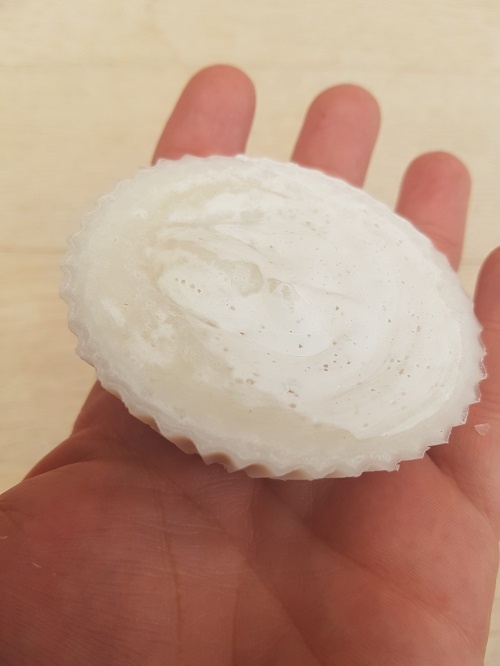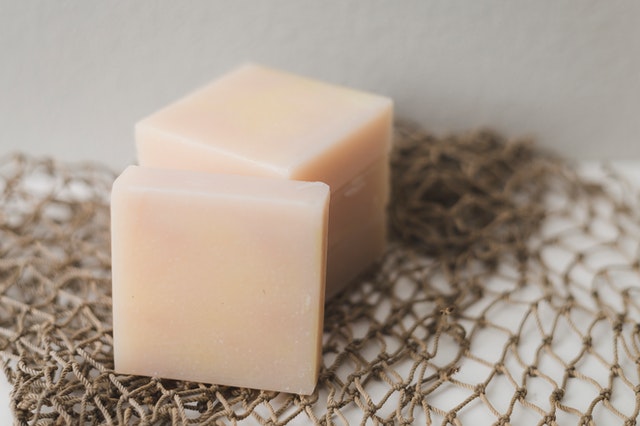If you want an easy go-to soap, and like an uncomplicated recipe, you should definitely try this one out!
The soap is made from oils that many people already have in their houses.
The oils used in this recipe are olive and coconut. The other two ingredients are NaOH and water.
The recipe has a 5% superfat ratio that makes it nourishing for the skin.
The recipe explains how to make a cold process soap, but you can also use the hot process (click for guide) if you prefer.
Recipe for Easy Basic Soap With Only 4 Ingredients
Equipment
- 2 plastic, glass, or steel bowls
- Microwave oven
- Wooden or plastic spoon
- Silicone molds
- Stick blender
- Safety gear
- Kitchen scale
- Thermometer
- pH meter or test strips
Materials
- 14 OZ Olive Oil 400 grams
- 14 OZ Coconut Oil 400 grams
- 10.64 OZ Water 302 grams – distilled water is recommended
- 4.24 OZ NaOH (Lye) 120 grams
Instructions
- Read the soaping safely page, if you haven´t already
- Dissolve NaOH in water by slowly adding the NaOH to the water and stirring gently with the spoon. Leave the mixture to cool down
- Melt coconut oil and mix it with olive oil
- Wait until the lye is between 86 and 104 degrees F (20-40 degrees C) and heat the oils to approx the same temperature if needed.
- Mix the oils and the lye by slowly pouring oils into the lye
- Use a stick blender for 1-5 minutes until trace
- Pour your batter into a mold or molds as you prefer
- Check if the soap is firm enough to cut after 24 hours
- Cut the soap bars (if you used a big mold) and trim the edges
- Leave to cure, e.g., in a paper bag for 4 – 6 weeks and check pH. Store it at room temperature
Quality of the soap
| Soap Quality | Range | This Recipe |
| Hardness | 29 – 54 | 48 |
| Cleansing | 12 – 22 | 34 |
| Conditioning | 44 – 69 | 46 |
| Bubbly | 14 – 46 | 34 |
| Creamy | 16 – 48 | 15 |
| Iodine | 41 – 70 | 48 |
| INS | 136 – 165 | 182 |
Soap Fatty Acid Profile
| Lauric | 24 |
| Myristic | 10 |
| Palmitic | 12 |
| Stearic | 3 |
| Ricinoleic | 0 |
| Oleic | 39 |
| Linoleic | 7 |
| Linolenic | 1 |
FAQ
Not adding anything that will thicken the batter, like essential oils or color, and only using a small number of easily accessible ingredients makes a recipe perfect for beginners.
Making soap that contains lye is unfortunately not a good idea for small children. Lye is very caustic and not safe for children.
No, you cannot use another oil without recalculating the recipe. Different kinds of oil have different fatty acid profiles and need different amounts of lye to saponify.
The soap will change its color after it is cured. In many cases, it turns out more white when completely dry. However, the color of the finished sope depends on the colors of your ingredients. Some oils are more yellow than others; that is why people tend to use color.




